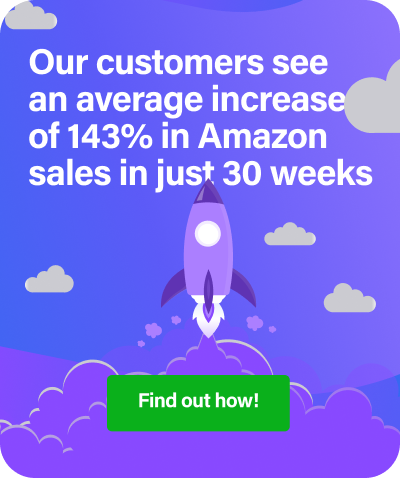Guest post by Manish from E2M Solutions
The boom of ecommerce has been on a steady rise with no signs of slowing down. There are hundreds of thousands of stores that operate completely online these days. In fact, the global ecommerce market is expected to grow to over $4 billion by next year.
Although the online retail world has opened up doors for any entrepreneur with a good business idea and some technical savvy to launch a business, it does not mean that everyone is doing so successfully. Competition is extremely high and consumer trust is generally low. Unfortunately, many online entrepreneurs are simply inexperienced and make major mistakes that hurt their company’s success. But let’s not let all the blame fall to the newbies – plenty of seasoned e-commerce store owners are making poor choices that could be hurting their bottom lines, too.
Part of the reason for this is the plethora of conflicting content that is swarming online. Everyone has an opinion about the right way (and wrong way) to run an online business and lots of people have advice to share. While their intentions may be good, it can be quite difficult to determine fact from fiction, leaving many online entrepreneurs scratching their heads and falling for faulty information.
There are several key mistakes that many ecommerce businesses make – which can negatively impact conversions and stand in the way of growth and success.
Is your online store guilty of any of these costly missteps?
1. Ignoring Critical Digital Business Security
Private information is shared with online businesses every day. Thanks to a series of news stories and cautionary tales throughout the past few years, people’s security worries are generally high.
According to a report from PwC, 69% of consumers do not think that online businesses are doing enough to keep their private data protected. What is even more alarming is that 87% of online shoppers would switch to a competing brand if they felt their information may be in danger.
In order to eliminate these fears and ensure that you keep your customers from switching to another brand, you must be doing all that you can to ensure data security. The checkout page is going to be where most of these safety concerns will be realized.
You need to use an e-commerce platform with an SSL encryption for any online payments. This is to ensure that sensitive information cannot be hacked or leaked. But, not only do you need to utilize encryption and security measures, but you should also make this apparent to your customers. Be sure to display trust badge symbols throughout your website, such as BBB certification, anti-virus software, and payment protection to boost consumer confidence and trust in your website.
2. Failing to Gather Substantial Reviews
One of the trickiest parts of operating an online store is the fact that customers cannot physically view or handle your products. Therefore, most people rely on reviews and ratings to help them make a final purchasing decision.
According to a study by BrightLocal, customers read an average of ten reviews before they feel like they can trust a business enough to consider a purchase.
Failing to gather lots of reviews can certainly hurt your conversions. But it is not just how many ratings your online store has that matters – the quality of the feedback can influence other customers as well.
For example, Trustpilot does a good job of capturing deeper insights from their customer reviews through question prompts that are designed to give interested customers (and themselves) the substantial information they need.

When you gather reviews, you need to be asking the right questions to gain 360-degree feedback. Don’t be afraid to ask leading questions about the pros and cons, either. A less-than-stellar honest review is going to be better than a glowing review that offers little information or comes off as fake.
3. Complicated and Lengthy Descriptions
Product descriptions are a prime spot to include keywords as part of your ecommerce SEO strategy. However, it is important that you don’t go overboard or get too long-winded with product pitches and descriptions.
You only have a few seconds to grasp attention online. Seeing a lot of text can cause people to immediately check out mentally. In fact, 38% of online shoppers agreed that they would exit a website if the content was simply too long or took too much effort to read. A text-heavy website is also rather unattractive. Since so much rides on the first impression that a customer has about your business, the overall look and feel of your product pages are incredibly important.
Rather than relying on your website to explain all of the benefits and uses of your product, use other content resources. Take the skincare company Derma-E as an example here. On its website, each product has a fairly straightforward description. However, their blog posts and social media pages are chockfull of information about the ingredients, benefits, and ways to use each product. This gives customers the option to learn more on their own without getting overwhelmed by lots of verbiage on the product page.
4. Setting Your Niche Too Wide
Believe it or not, you can actually limit your reach by trying to speak to a large, vast audience. Since competition is so high online, you are actually doing your business a disservice by trying to cast your net too wide. Inevitably, there will be another brand that is more popular, is cheaper, or has a larger marketing budget that will grab up your audience’s attention.
Instead, a narrower niche approach is far better, especially for smaller online companies. Finding the right niche product and audience can be tricky, but the results can pay off big time if you play your cards right.
First of all, you will need to do some intensive research to identify the tiny gaps in the market that you can fulfil. Take baby toys for instance. The market here is huge, so a general approach is not likely going to get your brand very far. However, by narrowing down your niche to baby toys that are made from organic, all-natural wood and non-toxic ingredients will be desired by a niche audience.

Conclusion
There is little room for error when it comes to operating an online store. Customers are quick to judge and even quicker to check out competing brands.
Make sure that the details of your website and business are designed to build trust and fulfil intrinsic needs. By fixing or avoiding these common mistakes, you can rest assured that your ecommerce business is set up for success.



